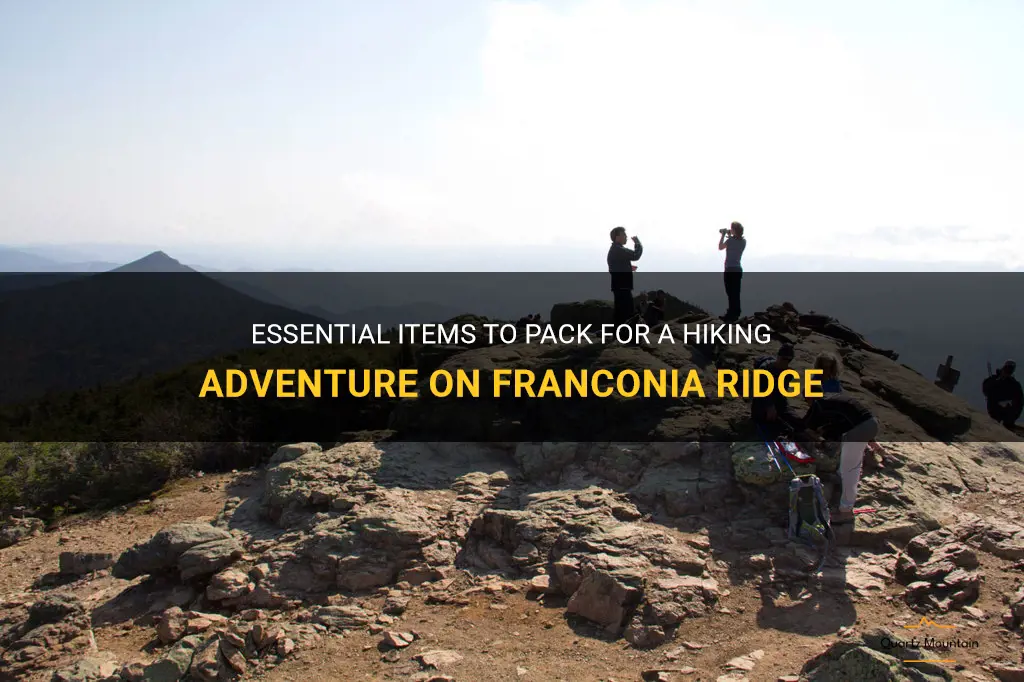
Are you ready for an unforgettable hiking adventure on Franconia Ridge? Known for its stunning views and challenging terrain, this iconic New Hampshire trail is a dream destination for outdoor enthusiasts. However, before embarking on this journey, it's crucial to pack the right essentials to ensure a safe and enjoyable experience. From sturdy boots to water purification tablets, we've compiled a list of must-have items that will help you conquer Franconia Ridge like a pro. So grab your backpack and get ready to hit the trails!
What You'll Learn
- What are the essential items to pack for a hike on Franconia Ridge in New Hampshire?
- Are there any specific clothing recommendations for hiking in the Franconia Ridge area?
- What type of footwear is best for the varied terrain and weather conditions on Franconia Ridge?
- Are there any specific safety items that should be included in a hiking pack for Franconia Ridge?
- Are there any food and water recommendations for a day hike on Franconia Ridge?

What are the essential items to pack for a hike on Franconia Ridge in New Hampshire?
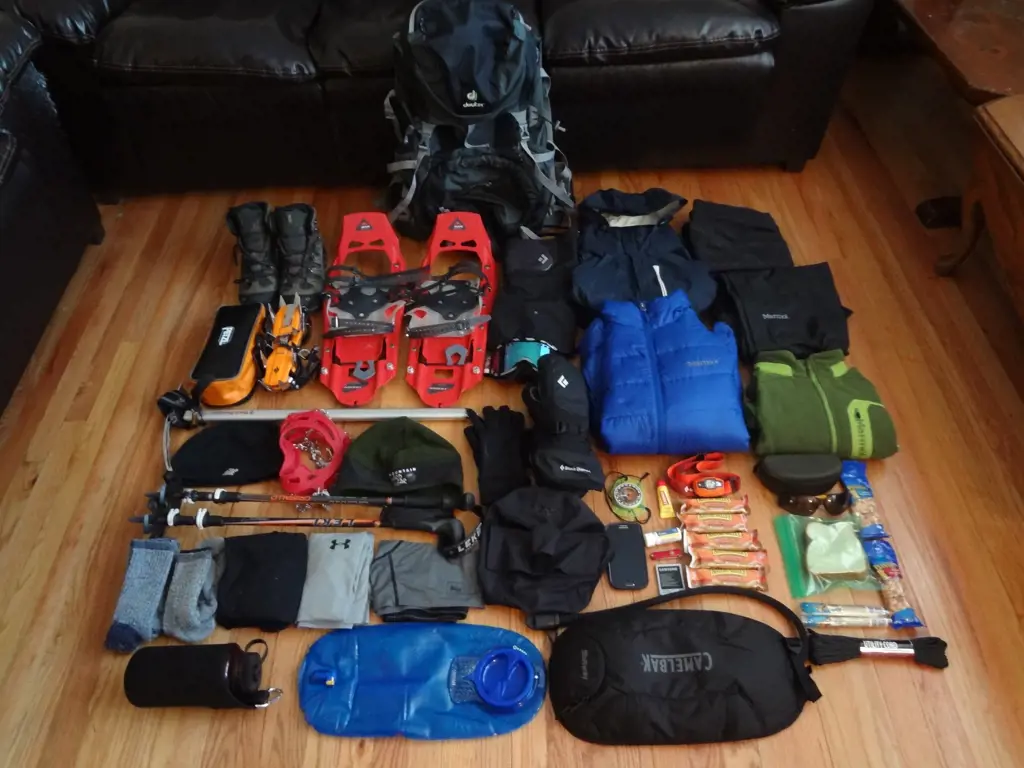
Franconia Ridge in New Hampshire is a popular destination for hikers looking to experience stunning views and challenging terrain. Before embarking on a hike in this area, it is important to be well-prepared and have the essential items packed to ensure a safe and enjoyable experience.
- Navigation Tools: Franconia Ridge offers a network of trails, and it is crucial to have a map and compass or GPS device to navigate the area. Trail maps can be obtained from visitor centers or printed from reliable online sources. Familiarize yourself with the route and mark important landmarks to aid navigation.
- Appropriate Clothing: The weather on Franconia Ridge can be unpredictable, even in the summer months. It is essential to pack clothing that will protect you from the elements. Dress in layers so you can easily adjust your outfit to the changing temperatures. A moisture-wicking base layer, insulating mid-layer, and waterproof outer layer are recommended. Don't forget to wear sturdy, waterproof hiking boots to protect your feet from rough terrain and to provide ankle support.
- Ample Food and Water: Hiking can be physically demanding, and it is important to stay properly fueled and hydrated. Pack enough food to provide energy throughout the hike, including high-protein snacks, fruits, and energy bars. Carry at least 2 liters of water per person, and consider bringing a water filtration system to refill your bottles from natural water sources along the trail.
- First Aid Kit: Accidents and minor injuries can happen during a hike, so it is essential to carry a well-stocked first aid kit. The kit should include bandages, adhesive tape, antiseptic ointment, pain relievers, insect repellent, and any personal medications you may need. Familiarize yourself with basic first aid techniques to be prepared in case of an emergency.
- Emergency Shelter: It is always wise to carry a lightweight emergency shelter, such as a thermal blanket or a bivy sack. This can provide protection from rain, wind, or unexpected changes in weather conditions. Even during a day hike, it is important to be prepared for unforeseen circumstances.
- Sun Protection: Franconia Ridge offers breathtaking exposed views, but that also means exposure to the sun's harmful rays. Pack sunscreen with a high SPF, a wide-brimmed hat, and sunglasses to protect your skin and eyes from sunburn and glare.
- Extra Batteries and Lighting: Ensure your flashlight or headlamp is in working order and pack extra batteries. Hiking in the dark can be extremely challenging and dangerous without proper lighting. Additionally, having a working headlamp can help navigate in low light or foggy conditions.
- Communication Devices: While enjoying the beauty of nature, it is important to have a means of communication in case of emergencies. Carry a fully charged cell phone, but keep in mind that reception may be limited in remote areas. Consider bringing a portable charger or a backup communication device like a two-way radio or a personal locator beacon.
- Insect Repellent: Franconia Ridge is home to insects, including mosquitoes and ticks, especially during the warmer months. Apply insect repellent or wear clothing treated with permethrin to protect yourself against bites and the potential transmission of illnesses like Lyme disease.
- Leave No Trace Principle: Lastly, remember to pack a trash bag to carry out any waste you generate during your hike. Adhere to the principles of Leave No Trace by respecting the natural environment and minimizing your impact on the fragile ecosystems found on Franconia Ridge.
By packing these essential items, you will be well-prepared for a hike on Franconia Ridge in New Hampshire. Remember to check the weather conditions, inform someone of your intended route and estimated return time, and always prioritize safety while enjoying the stunning views and challenging terrain of this beautiful hiking destination.
Essential Items for Packing for a PCT Thru Hike
You may want to see also

Are there any specific clothing recommendations for hiking in the Franconia Ridge area?
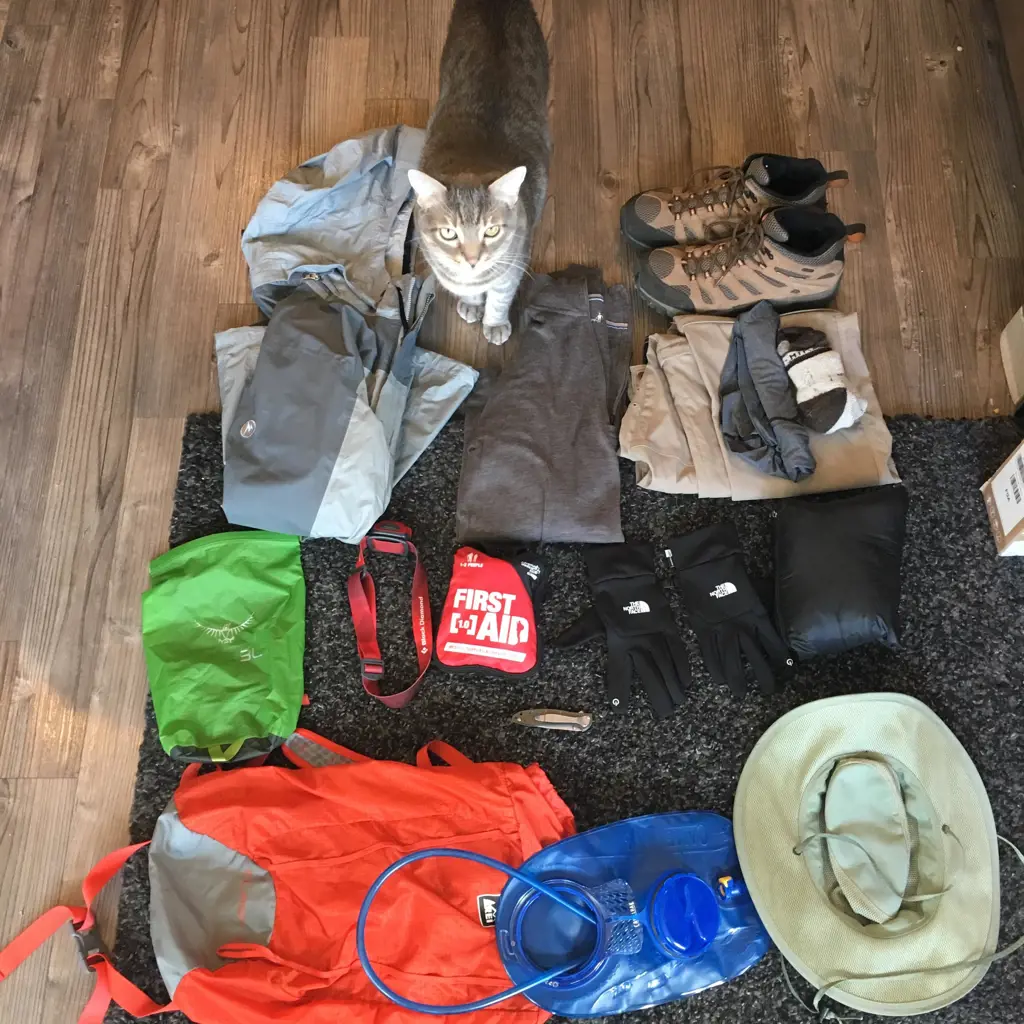
When it comes to hiking in the Franconia Ridge area, it's important to be prepared for changing weather conditions and potentially challenging terrain. This means choosing the right clothing to ensure your comfort and safety throughout your hike. Here are some specific clothing recommendations for hiking in the Franconia Ridge area:
- Layered clothing: The weather on Franconia Ridge can be unpredictable, with temperatures often dropping significantly as you gain elevation. It's important to dress in layers so that you can adjust your clothing as needed. Start with a moisture-wicking base layer to keep you dry and comfortable, then add insulating layers such as a fleece or down jacket, and finally, a waterproof and windproof outer shell to protect you from the elements.
- Moisture-wicking fabrics: Franconia Ridge is known for its challenging and rocky terrain, which means you're likely to work up a sweat on your hike. Choose clothing made from moisture-wicking fabrics such as synthetic blends or merino wool. These fabrics help to pull moisture away from your skin, keeping you dry and comfortable even when you're exerting a lot of energy.
- Sturdy hiking boots: The terrain on Franconia Ridge can be rugged and uneven, so it's crucial to wear sturdy and supportive hiking boots. Look for boots with good ankle support, a grippy sole, and a waterproof design. Proper footwear will help to prevent ankle injuries and provide stability on the rocky trails.
- Sun protection: The sun can be intense on Franconia Ridge, especially at higher elevations where you'll be exposed to direct sunlight. Wear a wide-brimmed hat or a cap with a sun-protective flap to shield your face and neck from the sun's rays. Additionally, apply a high SPF sunscreen to any exposed skin and wear sunglasses to protect your eyes.
- Windproof and waterproof outerwear: The weather on Franconia Ridge can change rapidly, and it's not uncommon to experience strong winds and sudden rain or snow showers. Be prepared by wearing a windproof and waterproof outer layer. Look for a jacket that is breathable and has sealed seams to keep you dry in wet conditions.
- Gloves and hat: As you gain elevation on Franconia Ridge, the temperature can drop significantly, especially during the colder months. Bring a pair of lightweight gloves and a hat to keep your extremities warm. Even in the summer, it's a good idea to have these items with you as the weather can change quickly.
- Consider the season: The clothing requirements can vary depending on the season you plan to hike in the Franconia Ridge area. In the summer, you'll want lightweight and breathable clothing to help you stay cool. In the winter, you'll need to bundle up with warmer layers, thermal underwear, and insulated outerwear.
By following these clothing recommendations, you'll be well-prepared for hiking in the Franconia Ridge area. Remember to check the weather forecast before your hike and always pack extra layers in case of unexpected weather changes. Stay safe, be prepared, and enjoy the stunning beauty of this popular hiking destination!

What type of footwear is best for the varied terrain and weather conditions on Franconia Ridge?
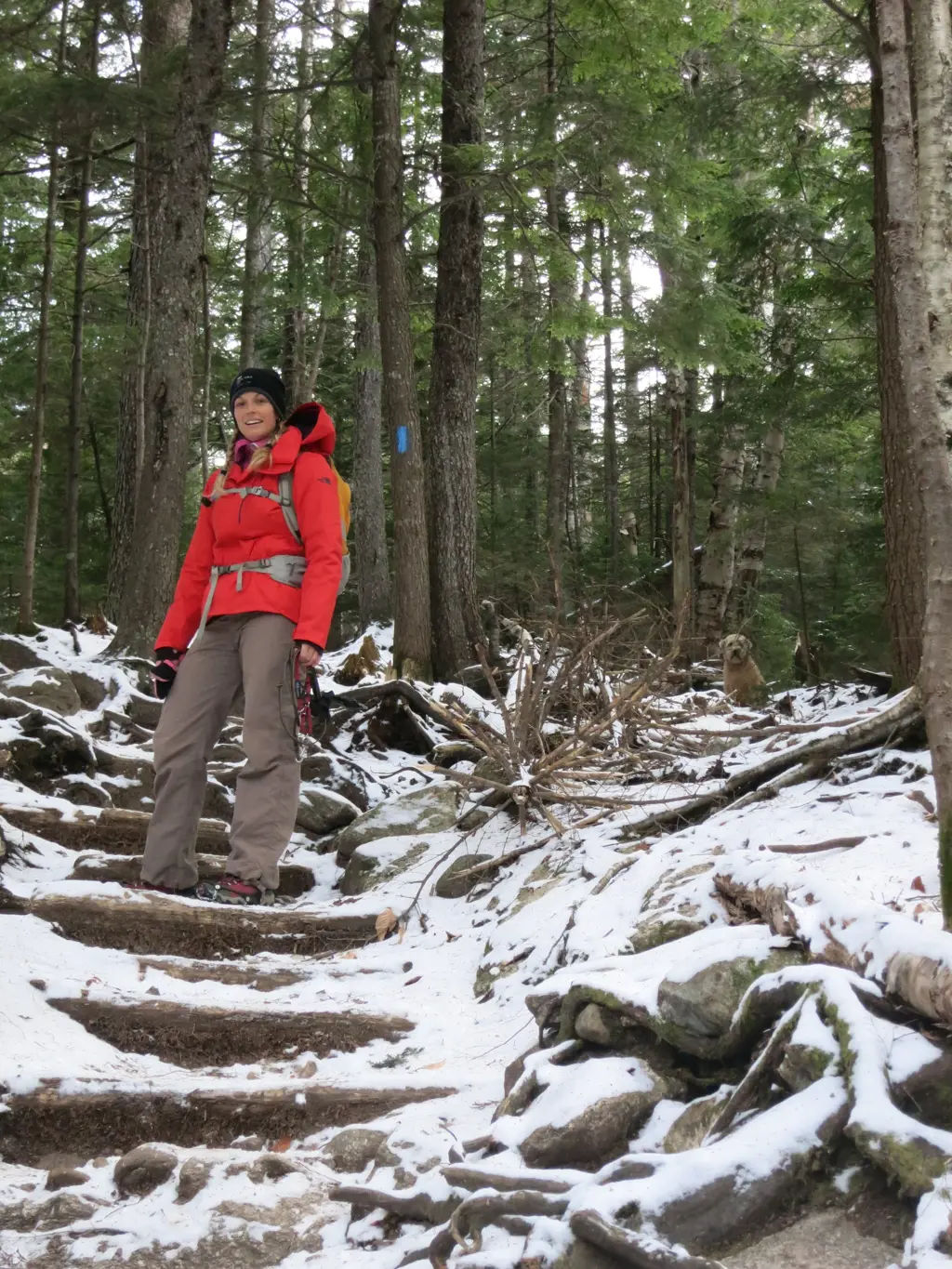
Franconia Ridge, located in the White Mountains of New Hampshire, is a popular destination for hikers and outdoor enthusiasts. The varied terrain and unpredictable weather conditions make it essential to choose the right footwear for a comfortable and safe hiking experience.
When it comes to choosing the best footwear for Franconia Ridge, several factors need to be considered. First and foremost, the terrain on the ridge is rugged and rocky, with steep ascents and descents. Therefore, it is important to opt for sturdy and supportive footwear that provides excellent traction and stability.
Hiking boots are the most recommended footwear for Franconia Ridge. These boots are specifically designed for hiking and offer excellent ankle support, which is crucial on uneven and rocky surfaces. Look for boots with a stiff sole and a high collar to protect your feet and ankles from twisted ankles and potential injuries.
In addition to ankle support, traction is another important aspect to consider. Franconia Ridge can get slippery, especially after rain or during winter months when the trails are covered in snow or ice. Look for boots with a rugged and aggressive tread pattern on the sole to ensure good traction on various surfaces.
While hiking boots are the best choice for most hikers, some experienced hikers may prefer trail running shoes or hiking shoes. These options are lighter and more flexible than boots, making them suitable for those who have already built up strength and stability in their ankles. However, it is important to note that these shoes may not provide as much ankle support as boots, so caution should be exercised on the rocky terrain of Franconia Ridge.
Furthermore, the weather conditions on Franconia Ridge can change rapidly. The ridge is known for its high winds and sudden temperature drops, even during summer months. Therefore, it is critical to choose footwear that is waterproof, or at the very least water-resistant. GORE-TEX or similar technologies can greatly help in keeping your feet dry and comfortable as you traverse the ridge.
One final consideration when choosing footwear for Franconia Ridge is proper sizing and fit. Ill-fitting shoes can lead to blisters and discomfort, which can quickly spoil an otherwise enjoyable hike. It is recommended to try on several pairs of shoes and walk around in them to ensure a snug and comfortable fit. Remember to consider any additional features, such as arch support or cushioning, that may be important for your individual foot anatomy and walking style.
In conclusion, the best footwear for Franconia Ridge is hiking boots that provide ankle support, traction, and waterproofing. However, some experienced hikers may opt for trail running shoes or hiking shoes if they have built up strength and stability in their ankles. Regardless of the footwear chosen, proper fit and sizing are essential for a comfortable and enjoyable hiking experience. By considering these factors, you can ensure your feet are well-equipped to handle the varied terrain and weather conditions on Franconia Ridge.
Essential Items to Pack for a Trip to the South Pacific
You may want to see also

Are there any specific safety items that should be included in a hiking pack for Franconia Ridge?
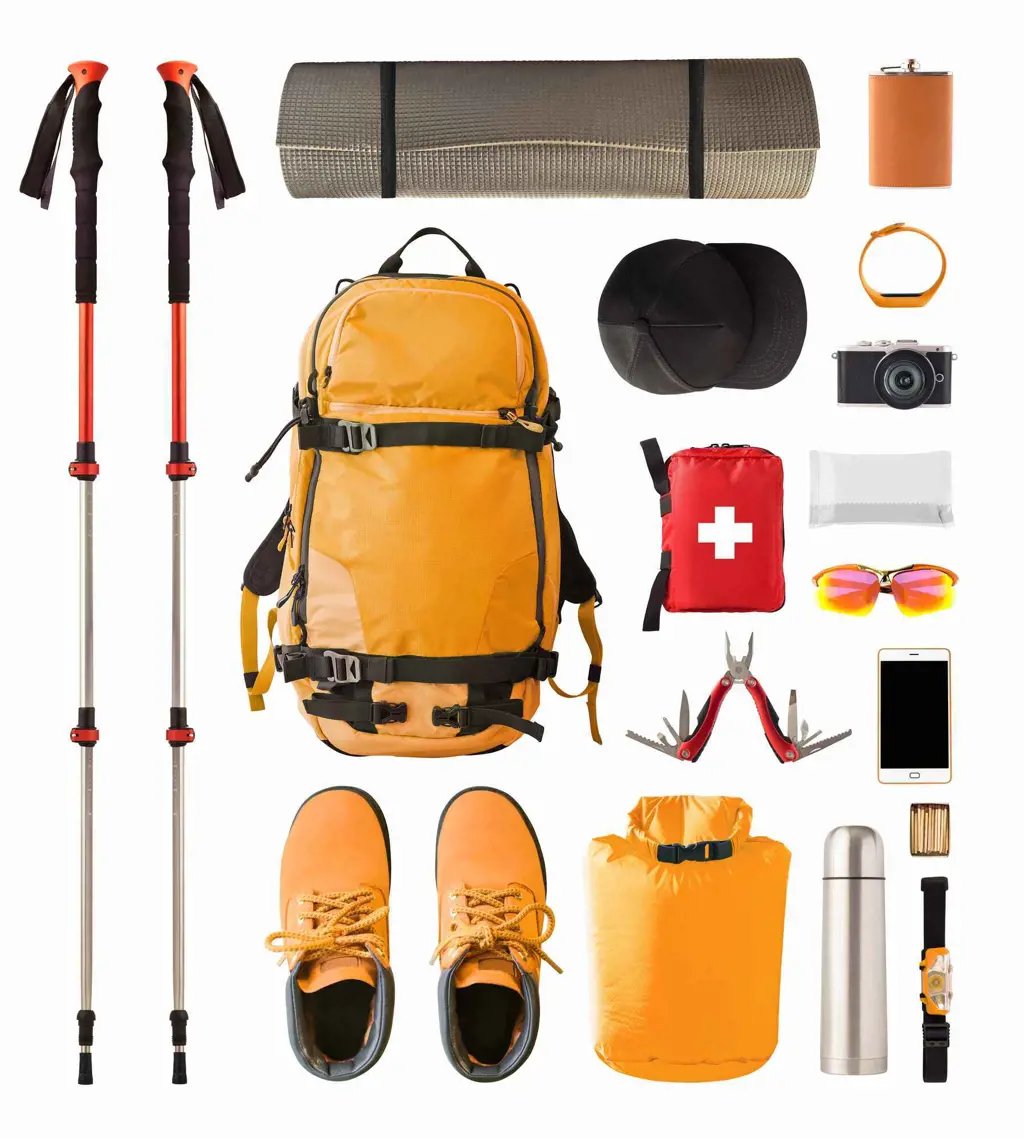
When preparing for a hike on Franconia Ridge, it is crucial to pack the necessary safety items to ensure a safe and enjoyable experience. The rugged terrain and unpredictable weather conditions of Franconia Ridge make it imperative to be prepared for any situation that may arise. Here are some specific safety items that should be included in your hiking pack:
- First Aid Kit: A fully stocked first aid kit is an essential item for any hiking trip. It should include bandages, adhesive tape, antiseptic ointment, pain relievers, and any necessary personal medications. Additionally, include items such as tweezers for tick removal, blister pads, and a small pair of scissors.
- Map and Compass: While there are marked trails on Franconia Ridge, it is always a good idea to bring a map and compass as a backup. These tools are essential for navigation and can help you find your way in case of getting lost or disoriented.
- Flashlight or Headlamp: Even if you plan to finish your hike before dark, it is essential to carry a flashlight or headlamp. Unexpected delays or emergencies may occur, and having a reliable light source will ensure that you can find your way safely.
- Extra Layers of Clothing: The weather on Franconia Ridge can change rapidly, and temperatures can drop significantly, even in the summer months. Always carry extra layers of clothing, including a lightweight, waterproof, and breathable jacket, warm hat, gloves, and extra socks. Dressing in layers allows you to add or remove clothing as needed to regulate body temperature.
- Emergency Shelter: In the event of an unexpected overnight stay or a sudden change in weather conditions, an emergency shelter, such as a lightweight tent, bivy sack, or emergency blanket, can provide essential protection from the elements. These lightweight shelters can easily fit into your pack and can make a significant difference in an emergency situation.
- Whistle and Signal Mirror: These signaling devices are essential for attracting attention in case of an emergency. A whistle's high-pitched sound can carry over long distances, allowing you to signal for help. A signal mirror can be used to reflect sunlight and attract attention from rescue teams or other hikers.
- Water and Food: It is vital to stay hydrated and nourished while hiking. Carry enough water to last the duration of your hike, and consider bringing water purification tablets or a filter to treat water from streams or other natural sources. Pack enough high-energy snacks and meals to keep you fueled throughout the hike.
- Sun Protection: Franconia Ridge receives a considerable amount of sun exposure, even on cloudy days. Sunscreen with a high SPF rating, sunglasses, and a wide-brimmed hat are essential to protect your skin and eyes from harmful UV radiation.
Remember, these are just some of the essential safety items to include in your hiking pack. It is crucial to tailor your pack to your specific needs and the duration of your hike. Always research the trail conditions, check the weather forecast, and make sure you are adequately prepared before venturing out on Franconia Ridge. Stay safe, enjoy the scenic beauty, and have a fantastic hiking experience!
Essential Items to Pack for a Memorable Trip with Your Boyfriend
You may want to see also

Are there any food and water recommendations for a day hike on Franconia Ridge?
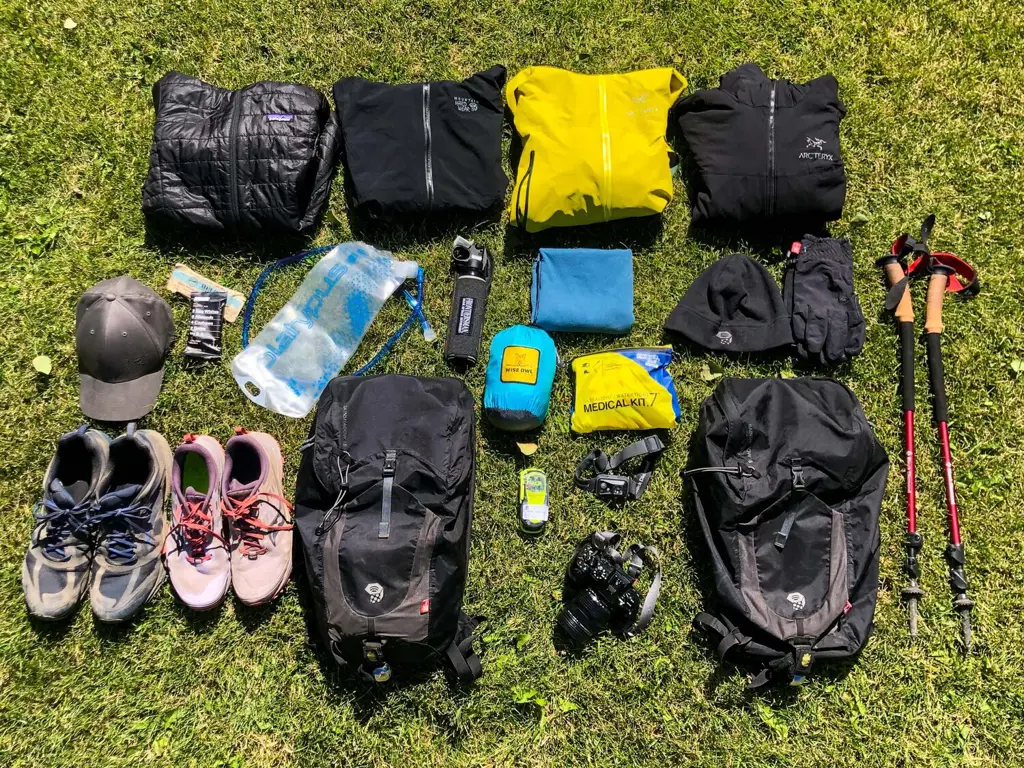
When planning for a day hike on Franconia Ridge, it is crucial to pack enough food and water to sustain your energy levels and stay hydrated. The rugged terrain and unpredictable weather conditions of this region make it essential to come prepared. Here are some recommendations for food and water to ensure a safe and enjoyable hike.
Water is the most important item to bring on any hike, and Franconia Ridge is no exception. The general rule of thumb is to carry at least 2 liters of water per person for a day hike. This amount can vary depending on weather conditions and personal hydration needs. It's better to carry more water than you think you'll need, as you may encounter unexpected delays or longer durations on the trail.
In addition to water, it's also a good idea to bring a water filter or purifier. There are several streams and water sources along the Franconia Ridge trail where you can refill your water bottles. However, it's important to treat the water properly before drinking to eliminate any risk of waterborne illnesses.
As for food, aim for a balance of carbohydrates, protein, and healthy fats to provide sustained energy throughout the hike. Pack foods that are lightweight, non-perishable, and easy to eat on the go. Some good options include:
- Trail mix: A mix of nuts, dried fruits, and chocolate or granola provides a good balance of carbohydrates, protein, and fat.
- Energy bars: Look for bars that are specifically designed for hiking and contain a mix of carbohydrates and protein. Avoid bars with excessive sugar or artificial ingredients.
- Fresh fruits: Apples, oranges, and bananas are lightweight and easy to pack. They provide natural sugars for quick energy and hydration.
- Jerky or dried meats: These are high in protein and can provide a savory and satisfying snack during the hike.
- Peanut butter or nut butter packets: These individual packets are convenient for a quick source of healthy fats and protein.
- Sandwiches or wraps: Opt for whole-grain bread or wraps filled with lean meats, cheese, and vegetables. These can be made ahead of time and packed in airtight containers.
- Electrolyte drink mixes: Consider bringing electrolyte supplements or drink mixes to replenish essential minerals lost through sweat during the hike.
It's important to consider the duration of your hike and the intensity of the terrain when planning your food and water supplies. If you plan to be out on the trail for an extended period or if the weather conditions are particularly challenging, you may need to pack additional food and water.
Lastly, always be mindful of Leave No Trace principles and pack out any trash or food waste. Franconia Ridge is a beautiful and fragile ecosystem, and we must do our part to preserve it for future generations.
In conclusion, when planning for a day hike on Franconia Ridge, it's essential to bring enough water and food to sustain your energy levels and stay hydrated. Carrying at least 2 liters of water per person, along with a water filter or purifier, is recommended. For food, aim for a balance of carbohydrates, protein, and healthy fats. Pack lightweight, non-perishable items such as trail mix, energy bars, fresh fruits, jerky, peanut butter packets, sandwiches, and electrolyte drink mixes. Consider the duration and intensity of your hike when determining your food and water needs. Remember to leave no trace and pack out any waste. Enjoy your hike on Franconia Ridge!
Essential Items to Pack for Your World Race Adventure
You may want to see also
Frequently asked questions
It is important to pack clothing that is appropriate for the weather conditions on Franconia Ridge. In the summer, lightweight and breathable clothing is recommended to help keep you cool, such as moisture-wicking t-shirts and shorts or hiking pants. Layers are also important, as the temperature can change rapidly, so pack a lightweight jacket or fleece for cooler conditions. Additionally, don't forget to pack a hat, sunglasses, and sunscreen to protect yourself from the sun. In the winter, it is important to pack warm and insulating clothing, including a base layer, mid-layer, and a waterproof and windproof outer layer, as well as a hat, gloves, and warm socks.
Aside from appropriate clothing, there are several essential gear items that you should pack for hiking Franconia Ridge. These include a sturdy and comfortable pair of hiking boots, a backpack to carry your supplies, and trekking poles for added stability and support. You should also bring plenty of water and snacks to keep yourself hydrated and fueled throughout the hike. It is also important to pack a map and compass or a GPS device, as well as a first aid kit in case of any emergencies. Finally, don't forget to bring a headlamp or flashlight, as well as an extra set of batteries, in case you end up hiking in low light conditions.
In addition to clothing and gear, there are a few other items that you should consider packing for your hike on Franconia Ridge. It is always a good idea to bring insect repellent and consider wearing long pants and sleeves to protect yourself from ticks and other bugs. It is also important to pack plenty of food and snacks, as well as a lightweight stove and cookware if you plan on cooking meals along the trail. Don't forget to bring a water filtration system or purification tablets to ensure that you have access to clean drinking water along the hike. Lastly, be sure to bring a fully charged cell phone or a satellite phone in case of emergencies, as well as a whistle or signaling device to attract attention if needed.







